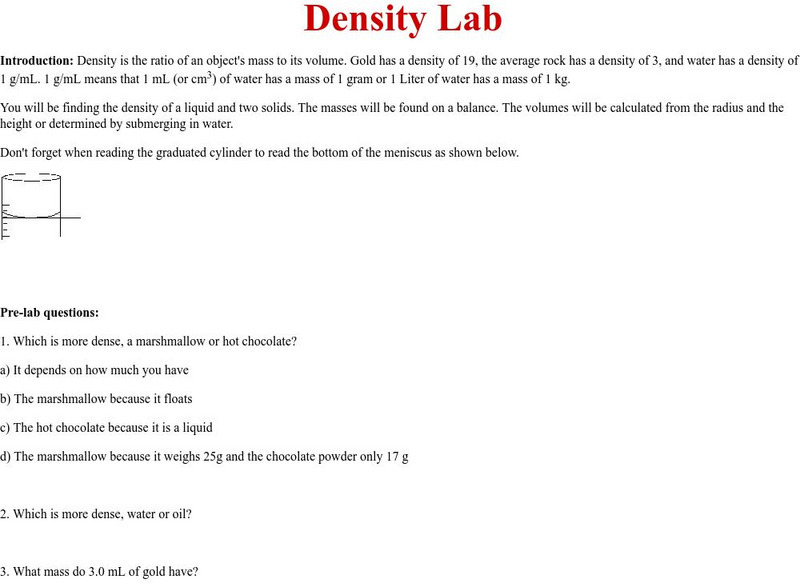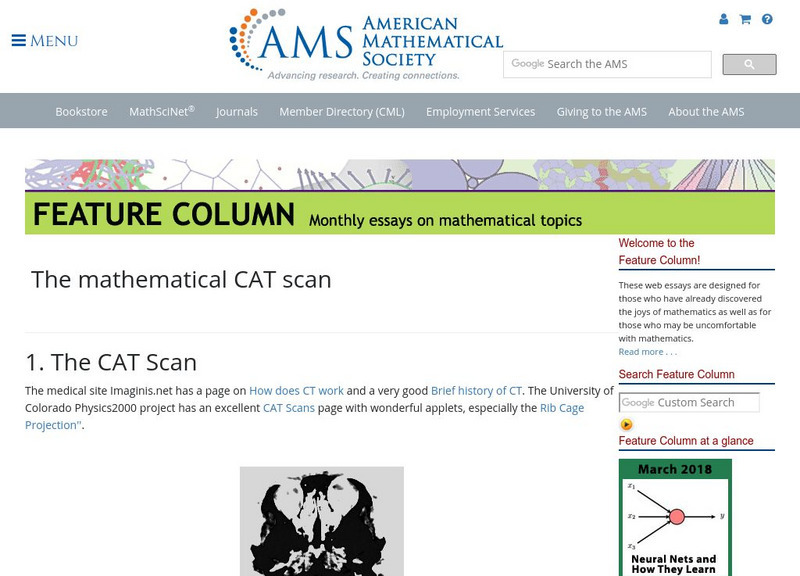Hi, what do you want to do?
Hunkins Experiments
Hunkin's Experiments: See if a Ring Is Pure Gold
Hunkin's Experiments is a group of simple cartoon illustrations of scientific principles. Some would work well in the classroom, but others have little value beyond entertaining students. All of the projects are easy to do. This one...
Science Museum of Minnesota
Science Museum of Minnesota: Thinking Fountain: Density
An introduction to density, mass, and volume with links to related books and activities.
Science and Mathematics Initiative for Learning Enhancement (SMILE)
Smile: Comparing Liquid Density
Because different liquids have different properties, density also differs. In this lesson from the Illinois Institute of Technology, young scholars will calculate densities of water, dish-washing detergent, cooking oil, and other liquids.
Science and Mathematics Initiative for Learning Enhancement (SMILE)
Smile: Comparing Densities of Different Liquids
This lab experiment has students observe and compare the density of five different liquids while measuring mass and volume.
Science Education Resource Center at Carleton College
Serc: Mn Step: Sink or Float? Inquiry Investigation
For this activity, young scholars make predictions about whether different objects float or sink, then test them. They are asked to record their observations and results for each, and compare their results to others'.
Science Education Resource Center at Carleton College
Serc: Mn Step: Who Is on Top?
Pupils investigate density in this activity when they try to find out if oil or water has a higher density.
Simon Fraser University
Chem1 Virtual Textbook: How Thermal Energy Is Stored in Molecules
With an overview of topics related to chemical energetics, this site provides a foundation to a study of thermodynamics and thermal energy. Other topics covered include kinetic energy, translation, rotation, vibrations, density, and more.
University of Hawai'i
The Hawai`i Space Grant Consortium: Viscosity Lab
This is a high school level laboratory exercise demonstrating the properties of viscosity. Standard classroom science are required to do this lab.
Michigan Reach Out
Reach Out Michigan: Are All Liquids the Same
This experiment demonstrates the density of selected liquids.
Wikimedia
Wikipedia: Volumetric Heat Capacity
Wikipedia offers a brief definition of the term, "Volumetric heat capacity." Includes hyperlinked terms.
My Science Site
Thinking Fountain: Liquid Layers [Pdf]
Students contrast the densities of oil and water in this lab activity. Can be done in groups or individually. This resource is in PDF form; requires Adobe Reader.
My Science Site
Middle School Science: Matter Puzzle [Pdf]
This resource presents a math game. A great way for students to reinforce their knowledge and understanding of the topic of matter. This resource is in PDF form; requires Adobe Reader.
PBS
Pbs Teachers: Water Density
Demonstrate the effect that dissolving different amounts of salt in water has on the density of the liquid.
PBS
Pbs Teachers: What's More Dense
Compare the density of water, corn oil and corn syrup by trying to float different items in each material and then putting all three liquids into one container.
PBS
Pbs Teachers: Hot Air Balloon Experiment
Explore how heat affects the density of air by building and flying a hot air balloon using large plastic bags and the hot air from an electric hairdryer.
Other
The Science House: Daffy Densities
In this lab experiment, students will use 4 solids and 6 liquids to create colorful, layered rows demonstrating that less dense materials will float on top of the more dense materials.
Other
The Science House: Red, White, and Blue Ii
This colorful demonstration illustrates the rule, "likes dissolve likes," by combining three, immiscible liquids to create a density column." Teacher notes provide background information.
Other
Lapeer County Schools Science Resources: Density Lab
A simple lab experiment for students to find the density of two solids and a liquid (does not use water displacement). Note that number 1d should not state "weighs" since mass is being found.
Other
Baranidesign: Air Density Calculator
A calculator that computes air density if altitude, temperature, humidity, and barometric pressure are known.
Other
Bigelow Laboratory for Ocean Sciences: Salinity and Deep Ocean Currents
For this activity, students will investigate how temperature and currents affect the salinity of ocean water, making predictions after studying ocean maps. It is recommended that teachers do the experiment themselves before presenting it...
Treehut
Suzy's World: How Come Some Liquids Don?t Mix?
This site from Suzy's World explores how and why certain liquids mix better than others. Content includes fun facts and a classroom experiment. This site also includes links to additional information on related subjects.
Simon Fraser University
Chem1 Virtual Textbook: Densities of Substances and Materials
As part of a larger site called "Getting started in Chemistry," this site examines various topics related to the densities of substances and materials. Included in the study are properties of solids, liquids and gases, and how density is...
Other
American Mathematical Society: The Mathematical Cat Scan
Diagrams and discussion of the "collection of 1-dimensional records" that make up a CAT scan.






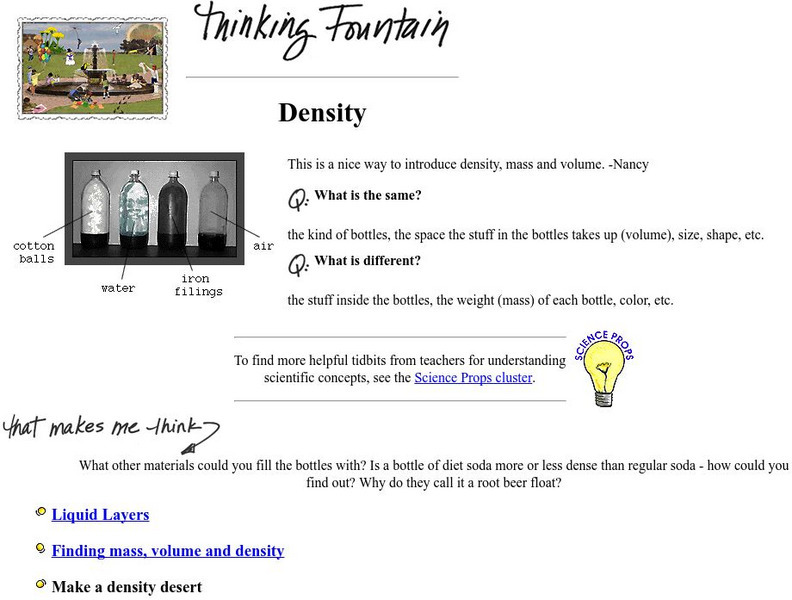
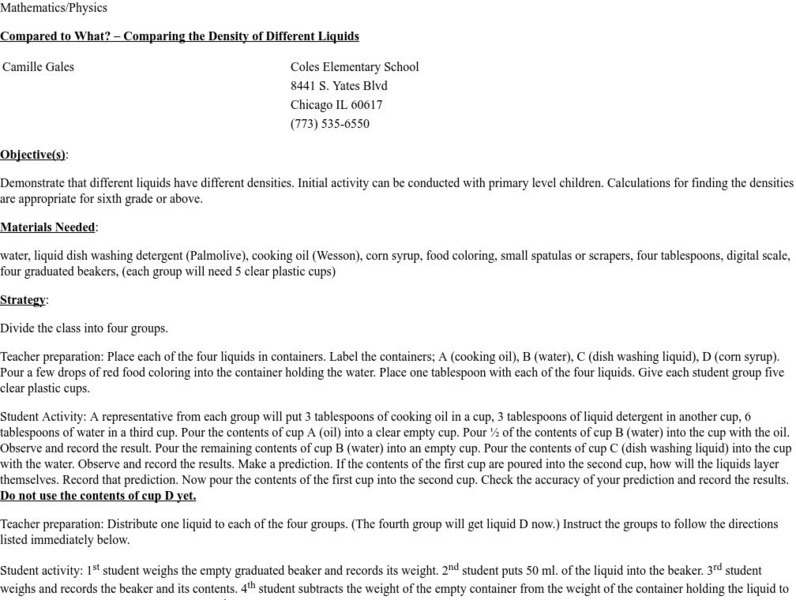
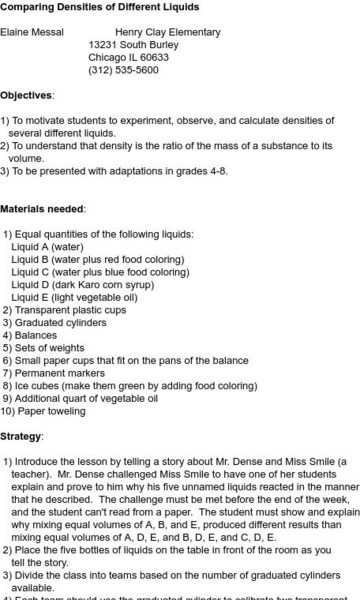
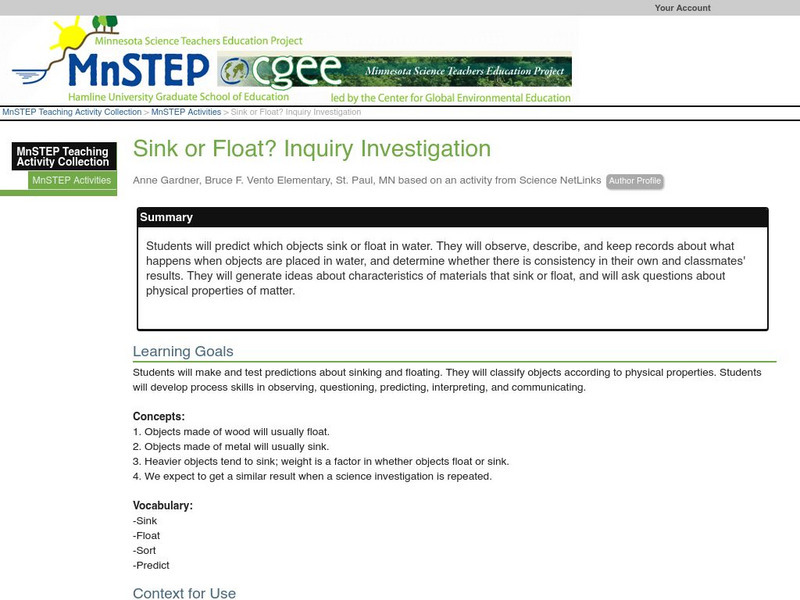

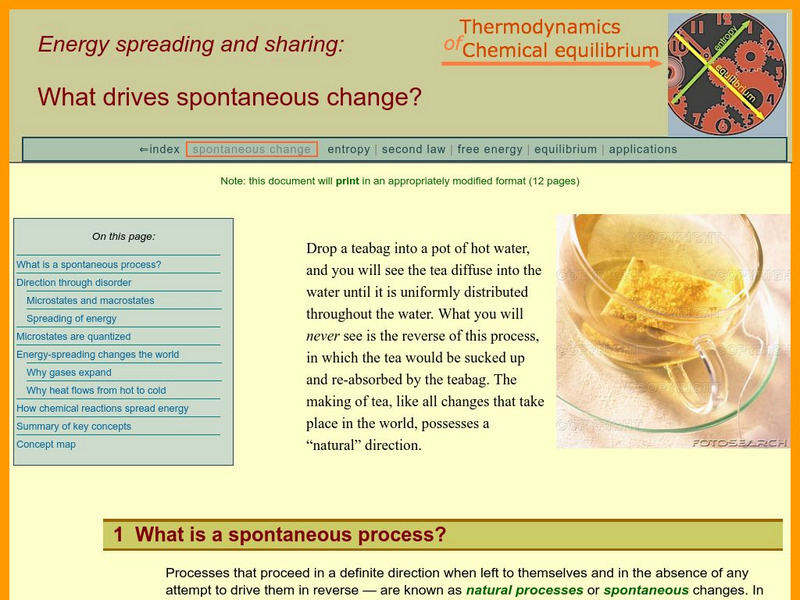
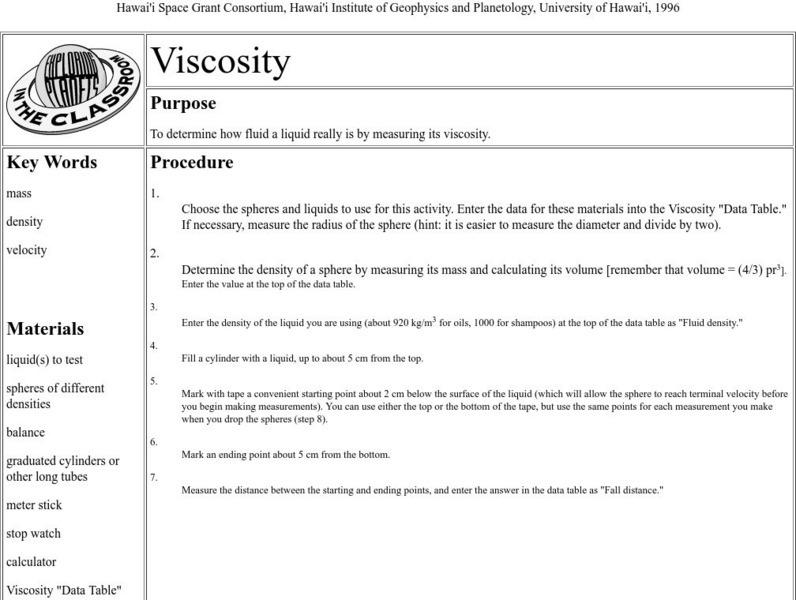
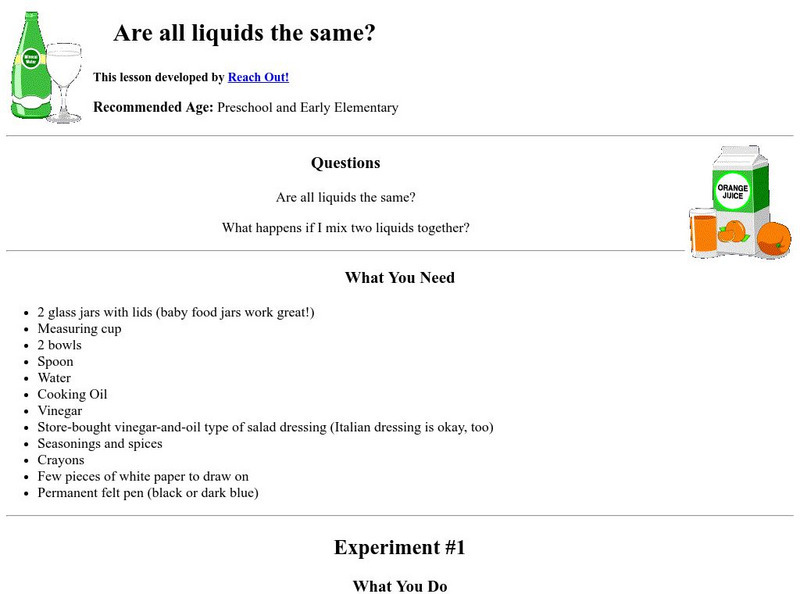

![Thinking Fountain: Liquid Layers [Pdf] Activity Thinking Fountain: Liquid Layers [Pdf] Activity](https://static.lp.lexp.cloud/images/attachment_defaults/resource/large/FPO-knovation.png)




